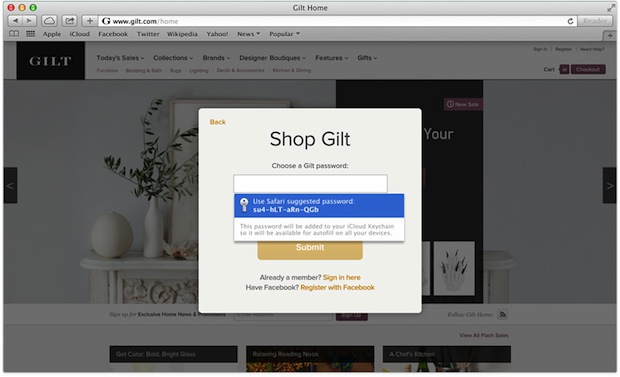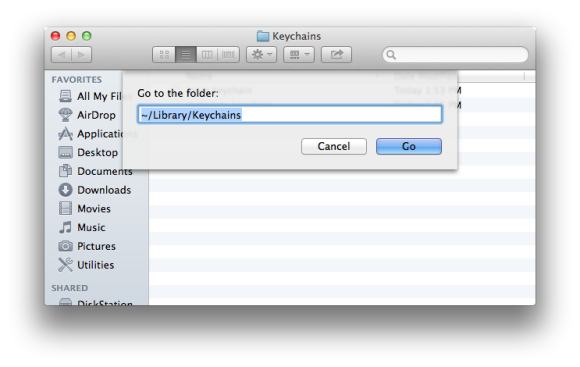

- #MANAGE ICLOUD PASSWORDS KEYCHAIN MAC OS#
- #MANAGE ICLOUD PASSWORDS KEYCHAIN VERIFICATION#
- #MANAGE ICLOUD PASSWORDS KEYCHAIN PASSWORD#
- #MANAGE ICLOUD PASSWORDS KEYCHAIN MAC#

You can have multiple usernames and passwords for a single website.
#MANAGE ICLOUD PASSWORDS KEYCHAIN PASSWORD#
The next time you try to log in to the same website, Safari will automatically fill in the username and password fields with the saved data. For security reasons, we decided to keep this option disabled.Īfter enabling the “Names and Passwords” option, Safari will offer to save newly-entered passwords to iCloud Keychain. Turning on the “Always Allow” feature requires you to enable a Passcode Lock for the iPhone. The “Always Allow” feature enables password saving and autofill to take place even for websites which explicitly request passwords not to be saved. Don’t give your iPhone too much freedom though. If you haven’t already set the Safari AutoFill options, tap through Settings > Safari > Passwords & AutoFill and enable the options you need. Once you setup iCloud Keychain on the iPhone, the existing Safari AutoFill data such as saved passwords and personal name and address information are automatically added to the Keychain.
#MANAGE ICLOUD PASSWORDS KEYCHAIN VERIFICATION#
You can change the iCloud Keychain Security Code or verification phone number at any time by navigating to Settings > iCloud > Account > Keychain.

The cell phone number is required in case you need to verify your identity when using Keychain on other devices. As a result, for added security, we were also required to enter a valid cell phone number. In order to test the new Keychain feature, we opted for using an iCloud Security Code instead which means our saved-password data was automatically uploaded to the cloud. You can then set up iCloud Keychain on additional devices by approving them from the original iPhone. In this way, you will still be able to use iCloud Keychain across multiple devices but Keychain data will not be uploaded online. To keep the information stored in Keychain offline, tap through Advanced Options > Don’t Create Security Code > Skip Code. However, creating a Security Code will automatically upload your personal Keychain password and credit card information (albeit encrypted) to Apple’s servers. The code acts as your password which you can use to grant access to Keychain across multiple devices. To enable Keychain on the iPhone, toggle the iCloud Keychain switch to the right.Īt this stage, you are asked to create an iCloud Keychain Security Code. NOTE: It goes without saying that you must already have an iCloud account on the iPhone in order to set up the new Keychain feature. To set up iCloud Keychain on your iPhone, iPad, or iPod Touch, navigate to Settings > iCloud > Keychain. Note that Safari is the only web browser compatible with iCloud Keychain.
#MANAGE ICLOUD PASSWORDS KEYCHAIN MAC#
The password management platform is only available on Mac running Mavericks and on iOS devices running iOS 7.0.3 or higher.
#MANAGE ICLOUD PASSWORDS KEYCHAIN MAC OS#
ICloud Keychain was announced at the WWDC back in June, however, it was not publicly released until Apple’s fall event with the release of Mac OS Mavericks and iOS 7.0.3. Let’s set up iCloud Keychain on the iPhone If you choose to use iCloud Keychain as your personal password and credit card manager, you can opt-out from uploading the encrypted data to Apple’s servers with an inconspicuous workaround we found which we describe below. Keychain also allows you to generate unique and secure passwords when creating website accounts. Using iCloud Keychain, you no longer need to re-enter WiFi or website passwords, or even credit card information across multiple iPhones, iPads or iPod Touch devices. With iCloud Keychain, Apple provides a new way for managing passwords across multiple iOS devices.


 0 kommentar(er)
0 kommentar(er)
